As an Amazon Associate, I earn from qualifying purchases. In addition, I participate in several other affiliate programs that allow me to earn while I recommend products I love.
Ever wondered why red velvet cake is so…red?
In this blog post, we’re going to dig deep into the secrets behind the vibrant hue of red velvet cake.
If you just want the short answer, then you should know that the basic red color comes from cocoa powder and chemical reactions, but the strong red color comes from red food coloring!
Also don’t forget to check out our red velvet cookie sandwich recipe and our list of the best red velvet desserts!

The Traditional Ingredients and Color of Red Velvet Cake
So, what’s in a red velvet cake that gives it that eye-catching red shade?
What makes red velvet cake red?
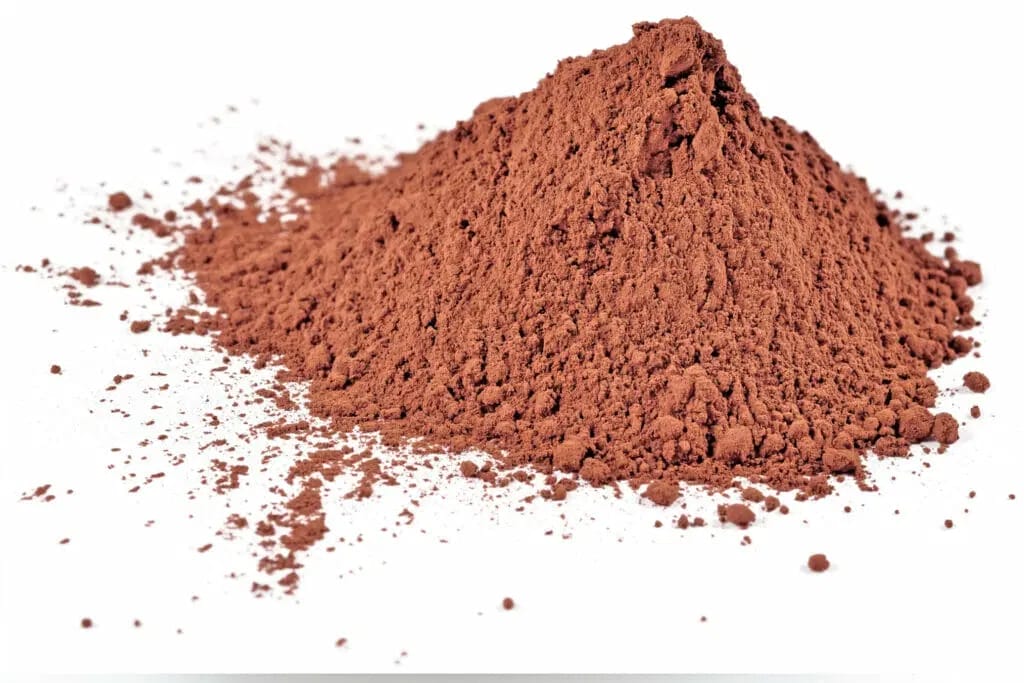
Basic Ingredients: what is red velvet cake made of?
Red velvet cake is made with a combination of familiar ingredients – flour, sugar, butter, cocoa powder, buttermilk, eggs, vanilla extract, and a touch of vinegar.
But what role do these ingredients play in the cake’s redness?
The Role of Cocoa Powder
Despite its name, red velvet cake doesn’t rely heavily on cocoa powder for its chocolate flavor.
However, it’s the cocoa powder that adds a subtle hint of chocolate and contributes to the cake’s reddish hue.
The Interaction Between Acidic Ingredients and Cocoa Powder
To unlock the redness, we need a little chemistry.
The acidic ingredients in the batter, such as buttermilk and vinegar, create the perfect environment for a chemical reaction with the cocoa powder.
This reaction results in the rich reddish-brown color that makes red velvet cake so alluring.
The Maillard Reaction and Red Velvet Cake
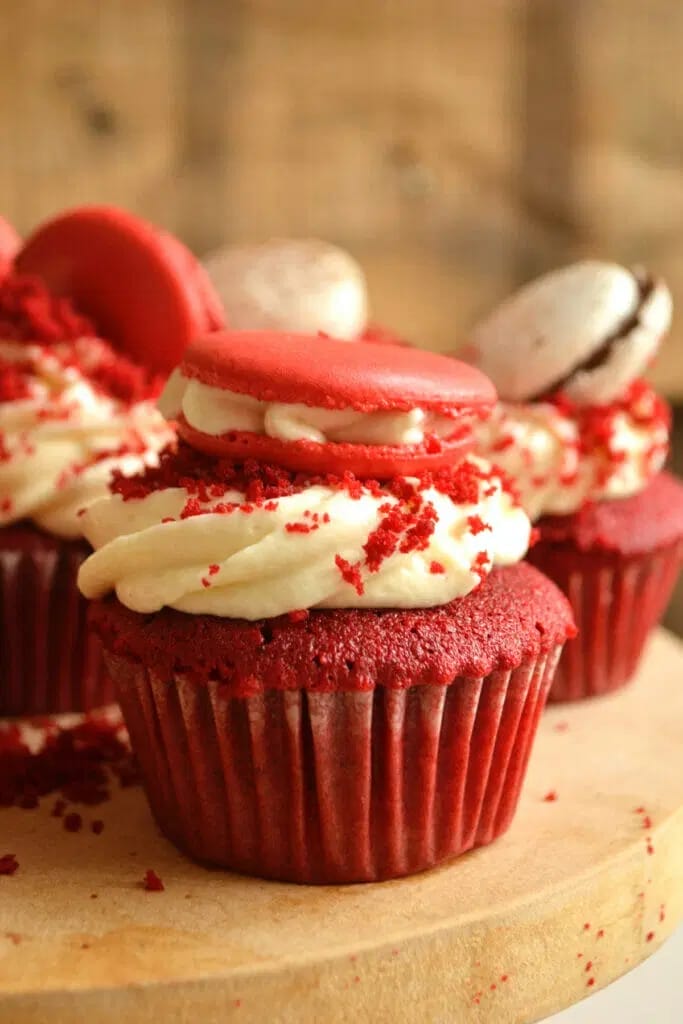
Now, let’s talk science when we’re wondering, “how does red velvet cake get its color?”
There’s something called the Maillard reaction, and it plays a role in making red velvet cake red.
The Role of Buttermilk and Vinegar
Buttermilk and vinegar provide the necessary acidity for the Maillard reaction to occur.
This reaction is responsible for the browning and flavor development in baked goods.
The Reaction Between Acidic Ingredients and Cocoa Powder
When the acid from the buttermilk and vinegar meets the cocoa powder, a beautiful chemical reaction takes place.
This reaction not only enhances the flavor of the cake but also intensifies the red hue.
The Reaction Between Anthocyanin and Acid
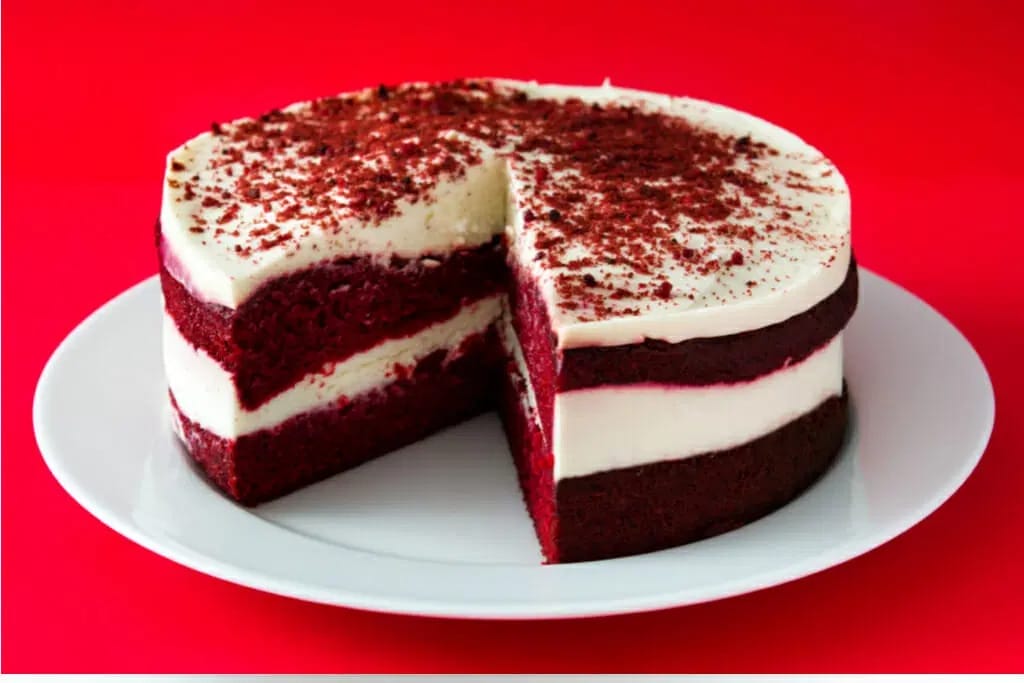
Hold on, there’s more to the story!
Have you heard of anthocyanin?
The Presence of Anthocyanin
Anthocyanin is a natural pigment found in certain ingredients, such as beetroot or food coloring derived from natural sources.
It’s the anthocyanin that adds an extra boost of redness to red velvet cake.
The Natural Pigments Responsible for the Red Color
These natural pigments, thanks to anthocyanin, are what give red velvet cake its beautiful red color.
They work in harmony with the Maillard reaction, enhancing the cake’s hue and making it even more visually appealing.
The Reaction Between Anthocyanin and the Acid in the Batter
When the acid in the batter interacts with the anthocyanin pigments, a reaction occurs that intensifies the red hue.
The Importance of Food Coloring in Modern Red Velvet Cakes
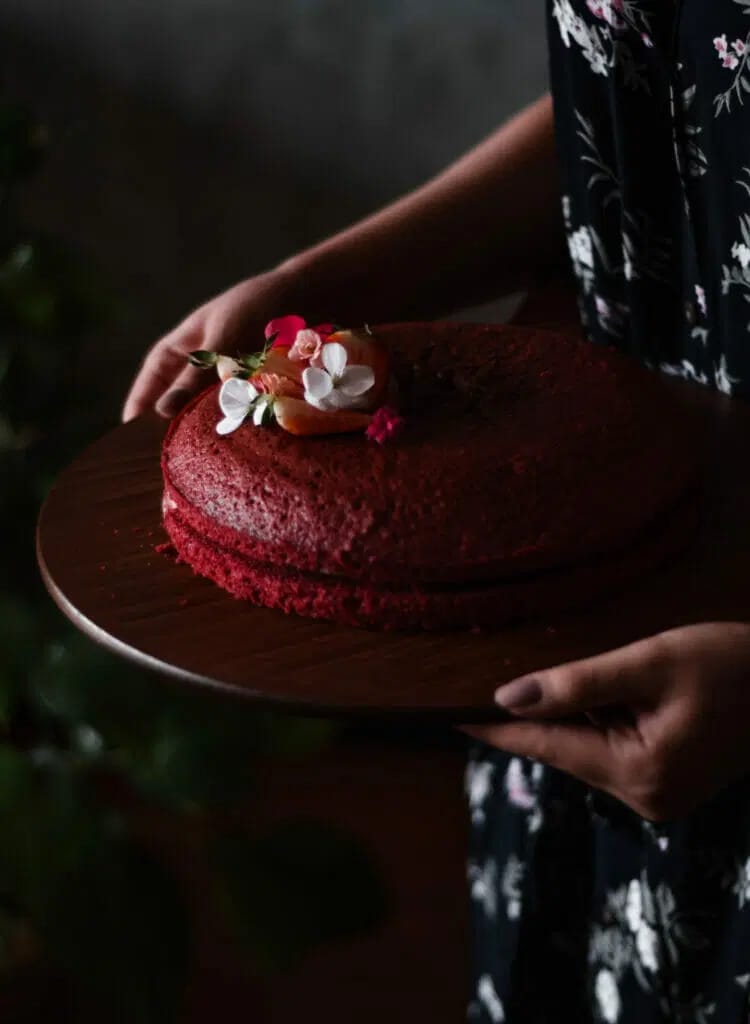
While natural reactions used to do all the work, modern red velvet cake recipes sometimes get a little help from food coloring.
The Evolution of Red Velvet Cake Recipes
Over time, recipes have evolved, and many people started incorporating artificial or natural food coloring to make the red color even more vibrant and consistent.
The Inclusion of Food Coloring
That’s right, a dash of food coloring is added to the batter to intensify and standardize the red hue.
The Various Types of Food Coloring Used
Whether it’s liquid, gel, or powder-based food coloring, they all contribute to that vibrant red shade that makes red velvet cake so visually appealing.
Natural Alternatives for Coloring Red Velvet Cake
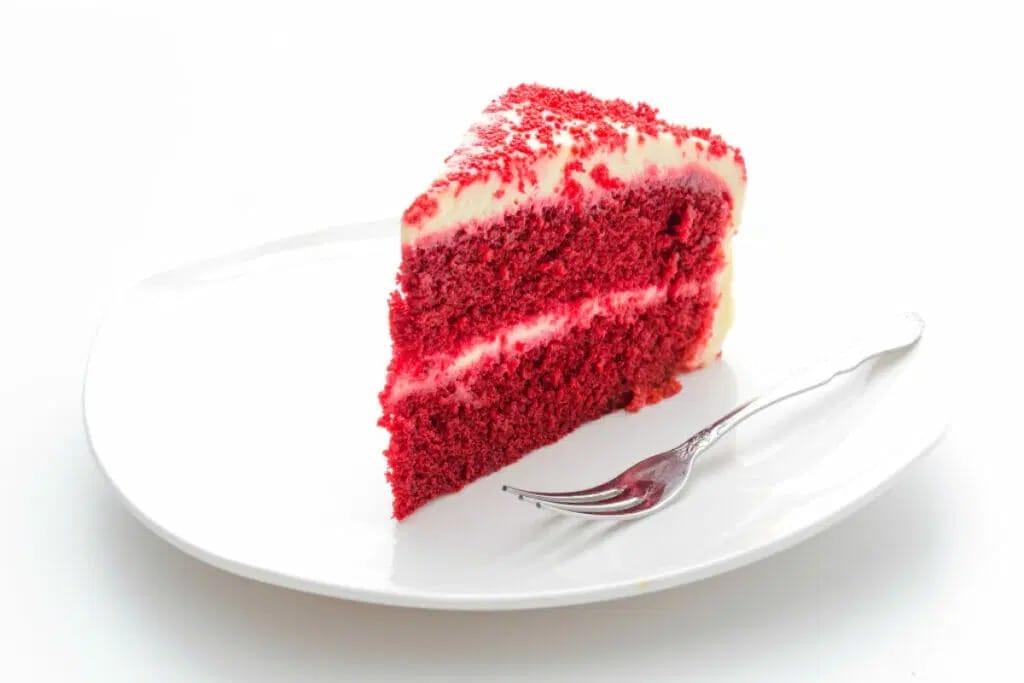
But wait, if you’re looking for a more natural touch, there are options too!
Using Beetroot or Beet Juice as a Natural Coloring Agent
Some bakers prefer using beetroot or beet juice as a natural way to get that beautiful red color.
The Benefits and Considerations of Using Natural Alternatives
Choosing natural alternatives means fewer artificial additives in your cake.
Plus, you might get some added nutrients along the way!
Experimenting with Other Natural Ingredients for Different Shades of Red
Why stop at beetroot?
Pomegranate juice or raspberry puree can add their own unique flavors and create different shades of red in your red velvet cake.
